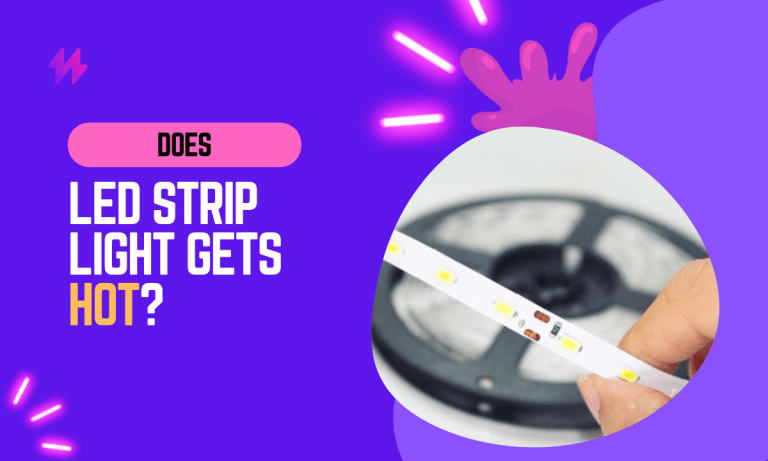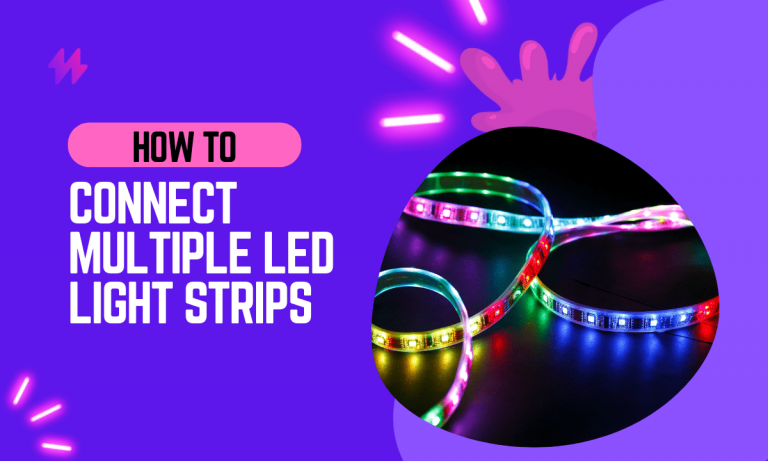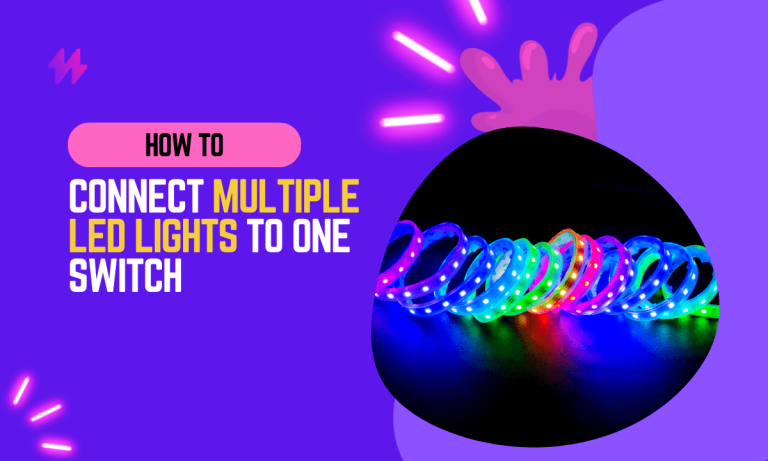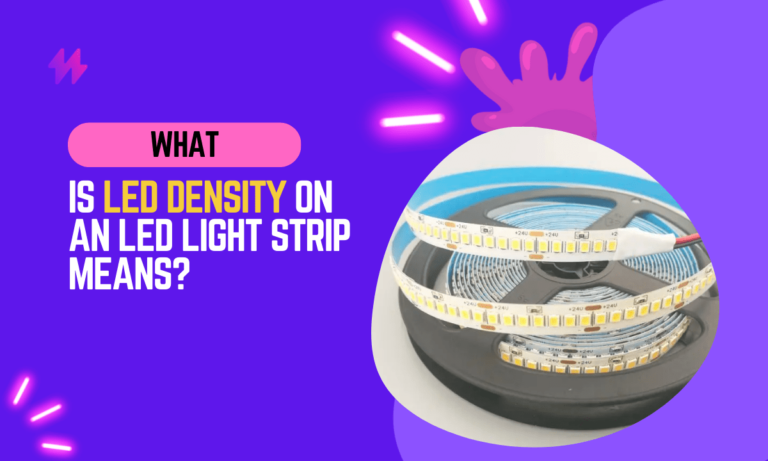Difference Between Strip and Rope Lights
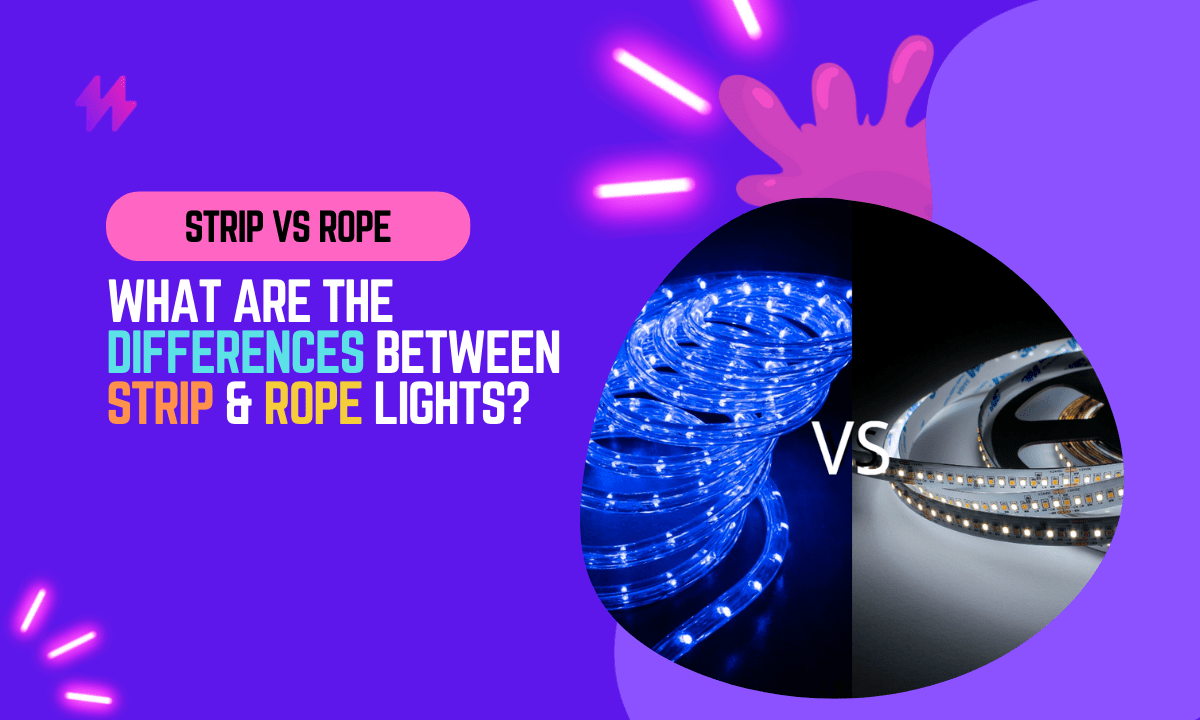
When it comes to accentuating spaces with lighting, both strip lights and rope lights are popular choices. Each brings a unique set of features and aesthetics to the table, making them suitable for different applications. In this blog, we will explore the key differences between strip lights and rope lights, helping you make an informed decision for your lighting needs.
Both strip lights and rope lights can serve various purposes, but understanding their functionality is crucial for achieving the desired ambience. It’s important to consider factors like installation ease, flexibility, and light quality when selecting between them for your next lighting project. Whether you’re dealing with accent lighting or general illumination tasks, each lighting solution has distinct advantages that cater to your environment. When making your decision, take into account the difference between strip and rope lights to ensure the right lighting solution for your needs.
Understanding the Difference Between Strip and Rope Lights: A Deep Dive into Rope Lighting Options
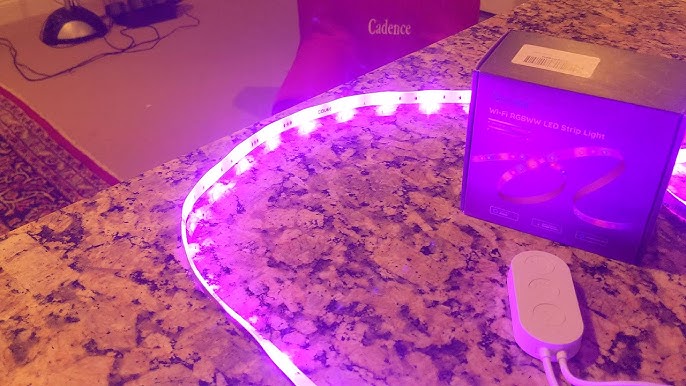
Strip lights, commonly known as LED strip lights, are a versatile lighting solution. They consist of small light-emitting diodes (LEDs) placed on a flexible circuit board. This design allows them to be used in a variety of applications, from under-cabinet lighting to creating intricate patterns on walls or ceilings.
When comparing LED strip lights to rope lighting, it’s important to note that LED strip lights are ultra-thin at only 5mm, making them ideal for tight spaces and intricate designs. In contrast, rope lights are thicker, offering a different aesthetic and application, especially suited for dynamic displays in decorative lighting projects.
Key Features of Strip Lights vs. Neon Rope Lights
- Flexibility and Cut-ability: Strip lights are extremely flexible and can be cut at certain intervals, usually every 1 to 2 inches, allowing for custom lengths.
- Brightness and Color Options: They often come in a range of color temperatures, from warm to cool whites, as well as RGB (red, green, blue) versions for color-changing effects.
- Adhesive Backing: Most strip lights have an adhesive backing for easy installation.
- Energy Efficiency: LED strip lights are known for their energy efficiency and long lifespan.
- Variety in LED Density: They are available in different LED densities, affecting brightness and power consumption.
Exploring the Features and Benefits of Rope Lights in Detail

Rope lights are long, cylindrical tubes that encase a series of LEDs or incandescent bulbs. They offer a more diffused light compared to strip lights and are commonly used for decorative purposes.
Rope lights consist of a transparent or translucent tube that encases light bulbs, typically LED lights or incandescent lights, providing a soft and diffused illumination. They are often used for decorative applications, making them a popular choice for cove lighting and accentuating features in both indoor and outdoor settings. In terms of versatility, LED strip lighting offers a more customizable approach with options like colour-changing lights that can adapt to various occasions and themes.
Key Features and Comparison of Rope Lights
- Construction: Rope lights have a round, flexible, plastic jacket that can withstand various weather conditions, making them suitable for outdoor use.
- Diffused Light: The light is more diffused and less intense, creating a soft glow.
- Less Flexibility in Cutting: Rope lights are less flexible in terms of cutting and are typically sold in specific lengths.
- Durability: The encased design makes them more durable and resistant to elements.
- Variety in Light Sources: They can use LED or incandescent bulbs, with LEDs being more energy-efficient.
Also read: Can You Use LED Strip Lights Outside Your Home?
When it comes to choosing between led strip lights and flexible rope lights, understanding their distinct characteristics can help you make informed lighting decisions. LED neon rope lights are more flexible than traditional rope lighting options, allowing for creative installations in tight spaces, like balcony accents or under cabinetry for additional mood lighting.
Comparing Strip Lights and Rope Lights: Key Differences Explained
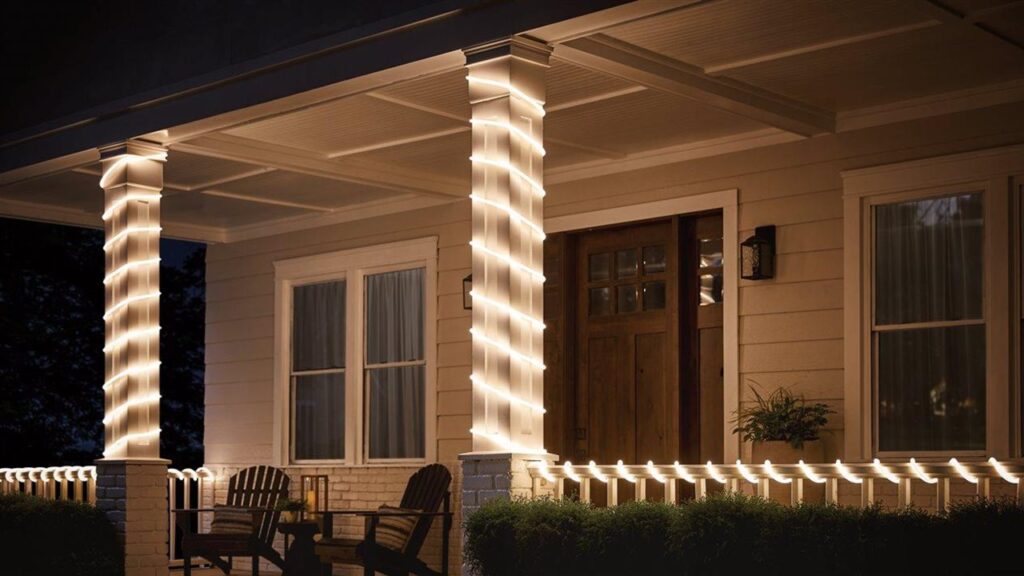
Understanding Flexibility and Application of Strip and Rope Lights
Strip lights are more flexible and can be cut to size, making them ideal for custom projects, intricate designs, or tight spaces. Rope lights, while flexible, are better suited for outlining areas or creating uniform loops due to their cylindrical shape.
When evaluating your lighting needs, LED strip lights offer versatility for a range of applications, allowing you to utilize them for backlighting or as custom light fixtures in various settings. For projects that require creative illumination, such as indoor garden lighting or accentuating features, the flexible nature of neon lights or LED strip size can provide focused illumination while adhering to specific design angles.
2. Exploring Brightness and Color Options in Strip and Rope Lights
Strip lights generally offer higher brightness levels and more color options, including the ability to change colors and patterns with controllers. Rope lights provide a consistent color and a softer light.
Strip lights generally offer higher brightness levels and more color options, including the ability to change colors and patterns with controllers. Rope lights provide a consistent color and a softer light. The use of high-quality strip lighting ensures a brighter light output and cleaner installation, making it a popular choice for various lighting applications. On the other hand, rope lights create a warm light glow perfect for outdoor decorations or festive settings, making them versatile lighting options for special occasions.
3. Installation & Use of Strip Lights and Rope Lights
Strip lights require a bit more effort in installation due to their adhesive backing and the need for accurate cutting. Rope lights are easier to install, often requiring just a power source and some clips or ties for support.
When it comes to installation, selecting the right type of lighting is essential for ensuring electricity costs are managed effectively. For those considering LED strip lights or rope lights, exploring the variety of on-shelf lighting fixtures available at hitlights.com will aid in finding quality lighting that meets specific needs.
4. Durability and Outdoor Use: An In-Depth Look at Strip Lights and Rope Lights
Rope lights are generally more durable and better suited for outdoor use. Their encased design protects against moisture and dust. Strip lights, while durable, may require additional waterproofing for outdoor use.
Rope lights are popular for their resilience and outdoor suitability, especially when incorporating elements like rain or dust. For a well-rounded lighting approach, consider integrating LED strip lights with their solid-state lighting technology, which allows for customizable tasks such as creating bright illumination for movie nights or festive events.
5. Energy Efficiency in Strip and Rope Lights
Both LED strip and rope lights are energy-efficient, but LED strip lights usually have a longer lifespan and a higher luminous efficacy.
You may also like: Are LED Strip Lights Allowed in Dorms?
LED strip lights and rope lights can both serve as effective solutions for various lighting applications while ensuring energy efficiency. However, when selecting the right type for your installation, factors like wiring, voltage, and wattage should also be carefully considered to achieve optimal performance. Choosing between these lighting options will greatly depend on your specific needs, such as the desired degree of light angle and whether you require features like dimmer switches for flexible control over brightness.
Conclusion: Comparing Key Features of Strip Lights and Rope Lights
In summary, understanding the distinctions between strip lights and rope lights is crucial for anyone looking to make an informed decision about their lighting needs. Strip lights, with their flexible circuit boards and LED emitters, offer a high degree of customization and precision in lighting. They are ideal for creating distinct, vibrant, and direct illumination in spaces that require specific attention to detail, such as under cabinet lighting in kitchens or highlighting architectural features. On the other hand, rope lights provide a more diffuse light and are best suited for ambient lighting, thanks to their encased design and omni-directional light output. This makes them perfect for outdoor settings, gardens, or anywhere a gentle, consistent light is needed to enhance the atmosphere.
Moreover, each type of lighting comes with its own set of installation considerations and potential applications. Strip lights, for instance, require a bit more technical know-how during installation, as they often need to be cut to size and may require additional components like connectors and controllers. Rope lights, however, are generally easier to handle and install, offering a plug-and-play solution that works well for those who prefer a straightforward setup without much fuss. The choice between strip and rope lights ultimately depends on the specific requirements of the project, including factors like the desired aesthetic effect, installation environment, and budget. By carefully considering these aspects, one can effectively choose the right type of lighting to not only meet functional requirements but also to create the desired ambiance for any space.
Difference Between Strip And Rope Lights | Key Differences in Design between Strip and Rope Lights
The Difference Between Strip and Rope Lights lies primarily in their structural design and shape variations. LED strip lights feature a flat, linear form with a series of light-emitting diodes arranged along a flexible tape, allowing for various applications such as task lighting and general lighting purposes. These strips can easily be cut to size and installed using strip light connectors, making them ideal for custom lighting ideas. Rope lights, on the other hand, consist of diode lights encased in a plastic tube, creating a more rounded shape that can produce a softer glow, often used for decorative accents in displays and club lighting. The internal light source in rope lights can sometimes lead to a cooler light output, while strip lighting provides more intense brightness with a focused glow. Overall, understanding the structure and design differences aids electricians in selecting the appropriate lighting offerings for specific projects, such as counter lighting or ambient accent lighting.
Difference Between Strip and Rope Lights | Structure and Shape Variations
Strip lights consist of flexible led strips lights that can be applied to a variety of surfaces. Their thin design allows them to conform easily to bends and curves, making them ideal for intricate light installations around furniture and architectural features. These light strips typically have a low bend angle, allowing for horizontal bends that suit detailed installations. Conversely, rope lights feature a thicker, tube-like form, making them less versatile when it comes to sharp bends. Rope yellows may not fit as easily into tight spaces, but their sturdy construction gives them a robust profile suitable for outlining fences or poles.
The structural differences between strip lights and rope lights also influence their light output. LED tape emits beams of light in a linear fashion, providing precise illumination that can enhance functional light in various settings. This setup allows for a wider viewing angle, which is beneficial for general lighting applications. Rope lights, with their thicker diameter tubes, often produce a broader dispersion of light that may serve better for ambient or display lighting. Though both serve important lighting roles, the light purity and instant illumination of led lighting strip kits tends to outshine that of rope lights, especially in applications requiring flicker-free illumination and cool light effects.
Aesthetic Considerations and Applications
The Difference Between Strip and Rope Lights is evident in their aesthetic applications. Strip lighting kits, often equipped with light emitting diodes, create a sleek, modern look that suits various spaces. These ribbon lights can highlight mirrors and accentuate decor through their ability to provide a linear lux effect. With options for low brightness and wall dimmer switches, strip lights can easily adjust to the desired light level accent. On the other hand, expensive rope lights, typically more bulky, can offer unique twinkling features that enhance festive atmospheres.
Applications vary based on the structural design of each lighting type. Strip lights are ideal for tight spaces, thanks to their flexibility and degree light angle capabilities. They excel in creating uniform illumination along edges or under cabinets. Rope lights, with a high bend angle and horizontal bend angle, function well in outlining areas or wrapping around objects. Both types serve as effective light replacements, providing extra lighting in creative projects, whether it’s for a cozy ambiance or a vibrant celebration. The Difference Between Strip and Rope Lights ultimately impacts the visual narrative of any environment.
Understanding the Flexibility and Versatility of Strip and Rope Lights
The Difference Between Strip and Rope Lights is evident in their adaptability and range of uses. Strip lights, often composed of LED technology mounted on thick tape, provide flexibility that allows for easy application in tighter spaces or along intricate surfaces. Rope lights, on the other hand, encase bulbs within a durable plastic tube, offering a more uniform glow that is ideal for outlining larger areas. Both types of lights support customization options, making them suitable for diverse environments from home decor to event settings. The choice between strip and rope lights often hinges on specific project requirements and desired aesthetic effects, showcasing their versatility in various applications.
Customization and Installation Options
Strip lights offer a higher degree of customization compared to rope lights due to their flexible design and varying brightness levels. Users can cut strip lights to desired lengths, making them ideal for fitting unique spaces. The incorporation of cob lights enhances this versatility, providing a smooth, uniform light output that is suitable for detailed installations. This highlights a key difference between strip and rope lights, where strip lights are often preferred for intricate designs or specific lighting needs.
Rope lights typically come pre-assembled and are less customizable in terms of length and shape. However, their installation is generally simpler, as they are designed for straightforward application in various settings. The sturdy casing of rope lights allows for easy mounting along edges or corners, providing consistent illumination. This practical aspect emphasizes another difference between strip and rope lights, with each type catering to distinct preferences in both aesthetics and functionality.
Best Use Cases for Both Lighting Types
Strip lights excel in applications where a sleek and modern appearance is desired. They are often used for under-cabinet lighting, accentuating shelves, or outlining architectural features. The flat design allows them to fit snugly into tight spaces, making them ideal for contemporary home designs and commercial settings. The difference between strip and rope lights becomes evident in these scenarios, as strip lights can easily blend into the surroundings without drawing too much attention.
Rope lights provide a more whimsical and decorative touch, making them suitable for festive events and outdoor settings. Their round shape and flexibility enable users to create unique patterns and shapes, perfect for wrapping around trees, columns, or railings. The difference between strip and rope lights lies in their visual impact; rope lights often create a softer, diffused glow, which can enhance the ambiance of casual gatherings and celebrations.
Analyzing Brightness and Color Options of Strip and Rope Lights
Understanding the brightness and color options available in strip and rope lights reveals a significant difference between these two lighting types. Strip lights often incorporate individual LED chips along their length, allowing for higher light output and more vibrant color choices. This design results in a consistent illumination, making them ideal for tasks requiring focused lighting. Conversely, rope lights are encased in a flexible tube that softens light diffusion, producing a gentle glow. This difference between strip and rope lights influences their applications, with strip lights being favored for accent lighting or detailed work while rope lights serve as decorative ambient lighting. The range of color temperatures also varies, with strip lights capable of providing a broader spectrum from warm to cool tones, enhancing their versatility in various settings.
LED Technology and Light Output
Strip lights utilize individual LED bulbs that are mounted on a flexible circuit board, allowing for a sleek and linear design. This structure provides a higher brightness output per foot compared to rope lights, which contain LED chips encased within a plastic tube. The difference in technology plays a crucial role in the overall intensity and clarity of light emitted. Understanding the difference between strip and rope lights helps consumers choose the right option for their specific lighting needs.
Rope lights generally offer a softer and diffused glow, ideal for ambient lighting scenarios. The LED technology embedded within the tubing creates a more uniform light distribution, making it suitable for decorative purposes. The difference between strip and rope lights extends beyond just aesthetics; it also influences their application in various settings. For tasks requiring bright, direct illumination, strip lights tend to perform better, while rope lights excel in creating an inviting atmosphere.
Color Temperature and Effects
Both strip and rope lights offer a range of color temperatures that can dramatically affect the ambiance of a space. Strip lights typically provide a more focused light output, which makes them ideal for task lighting in areas like kitchens or workspaces. Rope lights, on the other hand, emit a softer glow, perfect for creating mood lighting in living rooms or outdoor settings. The difference between strip and rope lights becomes evident in the way these color temperatures influence the perceived warmth or coolness of the environment.
The effects of color temperature extend beyond mere aesthetics; they also play a role in how spaces are perceived and experienced. A warm color temperature can evoke feelings of comfort and relaxation, while cooler tones tend to promote alertness and concentration. Understanding these differences between strip and rope lights can help consumers choose the right type for their specific needs. Selecting the appropriate color temperature enhances the functionality and overall appeal of any space.

